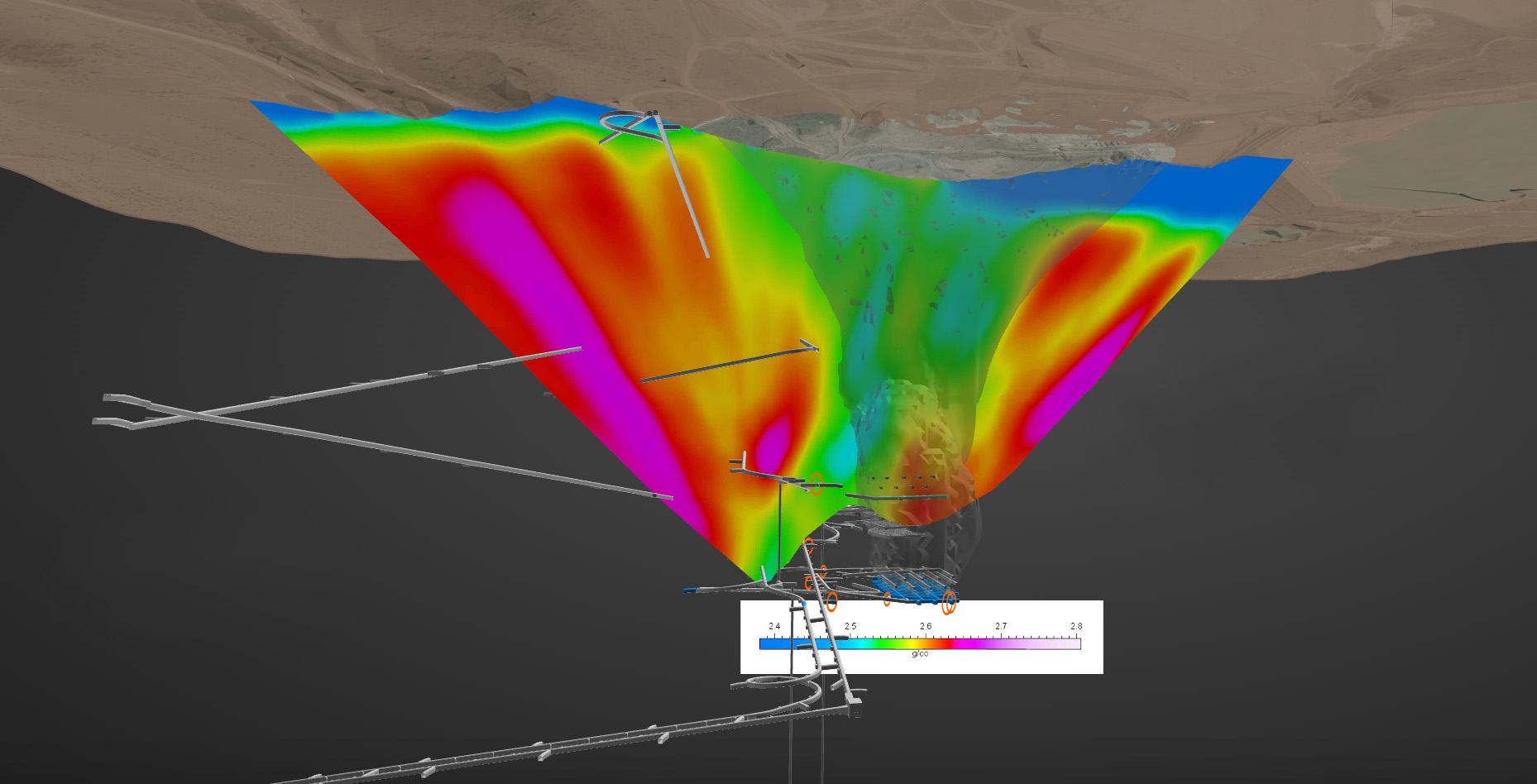September 17, 2024
New Afton Mine
PROJECT
Kamloops, Canada
LOCATION
Borehole, Panel, & Gallery
IDEON DETECTOR TYPE
Block Cave
APPLICATION TYPE
Highlights
The unconstrained analysis, later validated and constrained with New Gold-provided data, provided high-resolution geological and geotechnical insights throughout the survey area, resolved directly with measurement data. Ideon mapped the full cave back to 10-25 m or less spatial resolution at a depth of approximately 800 m, using no additional drilling.
BACKGROUND
Located about 15 km west of the city of Kamloops in central British Columbia, Canada, New Afton Mine is a gold and copper mine situated within the Iron Mask batholith complex. The silica-saturated, alkalic porphyry-style deposit is being mined with a block caving method, a method that allows for more economic extraction of larger and lower-grade deposits than traditional underground mining methods. Additional benefits of block caving include high daily production rates with no backfilling costs, and a large reduction in surface waste and environmental impact. The challenges of this technique can include cave stalling, unexpected blockages at draw points, difficulty in reliably predicting orebody cave-ability and understanding cave propagation, and managing ore flow.
New Afton is currently the only operating block cave mine in Canada, and has a mine life that extends beyond 2030. The current operation occupies the site of the historic Afton open pit mine, which operated from 1977 until 1997, and includes an inactive open pit and other historic facilities.
IDEON SOLUTION
Ideon worked with New Gold to install the world’s first muon tomography-based block cave monitoring solution in the operating B3 zone at New Afton Mine, with a goal of demonstrating the power of muon tomography to delineate the full 3D extent of the target cave, map heterogenous density variations in cave zones, and measure any observed temporal changes in both rock flow and cave extents.
Ideon used nine imaging locations in New Afton Mine, leveraging various formats of muon detectors to suit each location. Twenty-one detectors were connected through the mine network to Ideon’s cloud data platform. The solution was commissioned in March 2024 with zero safety incidents and great collaboration with the New Afton underground team.
The detectors were situated at approximately 600 m to 800 m deep and have gathered data over a period of 5 months (to date of publication). Data intake and analysis in the Ideon cloud platform were conducted remotely via mine network to verify data quality and system calibration, and unlock near-real-time subsurface density imaging with continuously improving resolution. Since operations began, data collection has been stable, streaming to Ideon’s REVEALTM for Caving for quasi real-time imaging. Imaging updates were provided on a monthly cadence to reflect typical cave reporting timelines

Ideon panel detector installed out of the way on the ceiling (back) of an underground tunnel in a mine.
New Afton Case Study Presentation
Watch Ideon CTO and Co-Founder, Doug Schouten, provide an in-depth review of the New Afton results.
Discover the outcomes at New Afton
The imaging program successfully met the primary objective of demonstrating the viability of applying muon tomography to accurately delineate and map the caved rock within Cave B3, to within 10-25 metre spatial resolution. A robust 3D model of the target area was generated using muon data alone, yielding a mesh-based representation of the best-fit current cave shape, that satisfies the observed muon data and a full 3D distribution of subsurface density across the cave zone.
Download the full case study for detailed content and analysis at the New Afton block cave project.


